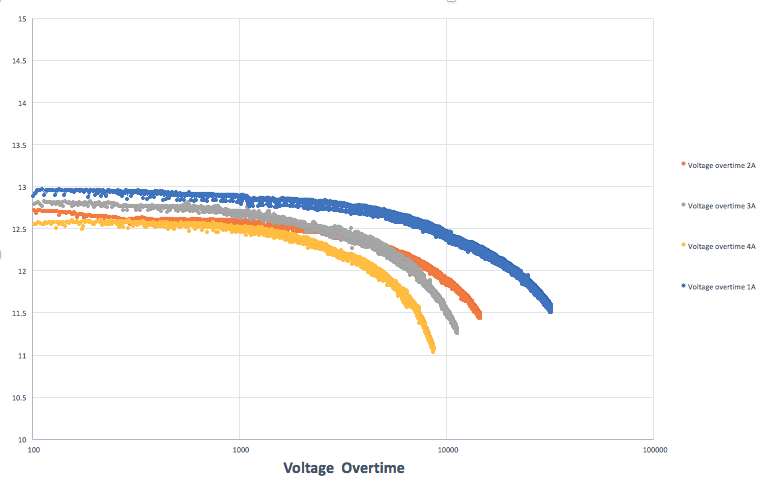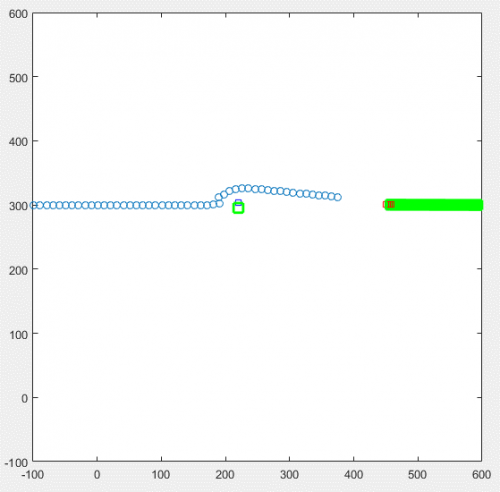Projects:2015s2-201 Development of Energy Storage Knowledge Bank
Contents
Project group detail
Topic
- Development of Energy Storage Knowledge
Team members
- Jingyuan Li (a1655749), Qianli Wu(a1212226)
Supervisor
- Nesimi Ertugrul, Wen Sonng
Aims
To develop a web based knowledge bank that is accessible to the general public. The knowledge bank will contain independent data, rest results, reports and case studies related to energy storage systems. The goal is to help provide a reliable source of information to the stake holders in the renewable energy storage industry.
Background
There has been a lot of study done in the area of battery modeling and management systems to help better our understand of and hopefully predict battery performance. But there are a number of different factors that affect the performance of a battery during operation. For the purpose of this project, in the following figure 1 shows a simple model for a battery. This is the most simplistic battery model showing Resistance Ro, open circuit voltage Uoc and the terminal voltage UL. Ro in this case we are assuming to be purely resistive, can be used to assess the health of the battery. The internal resistance(Ro) of batteries will increase over time as the health of the battery deteriorates. In the case of Valve-Regulated Lead-Acid batteries(VRLA) when the internal resistance is increased to %150 of the original value, the capacity of the battery will be reduced to %80[2]. Often it is hard to determine the exact parameters of batteries even when data are collected under strictly controlled environments. (temperature, humidity). In this project, we will research and organize useful information and data to produce a knowledge bank.
Methodology The project includes two parts, one is the website management and the second part is testing system. Researching is the important step at the preliminary stage. During the researching step, the website layout can be designed. And the content for each part can be added after we got the result form the part two. At the beginning of the part two, to decided each component and battery, the circuit should be designed firstly. After setting up the circuit, doing discharging, charging the battery and getting the results. The finial step is accomplishing the website management which is combined with the results which are analysed.
Hardware overview
 Figure2 Circuit diagram
Figure2 Circuit diagram
 Figure3 Voltage overtime
Figure3 Voltage overtime
Software management
Website design
Figure 4 shows a layout of website. From the home page, five sections can be chosen by the user which is required. The aim of website is to make a convenient channel for clients. Main sections: Battery Types includes Lead-Acid battery and Lithium-ion battery and also describes each type of characteristics, applications, case studied, models and safety which are referred to battery testing results. Particularly, tests are based on charging and discharging. Link to other and partners have the link website address for government and different companies and organizations which is better for reader to browse.
Website management
Project section
In this section, it illustrates the aim of website (Australian Storage Knowledge Bank), which will deliver significant to the public and the range of the clients. The renewable energy and energy storage developers, energy users can achieve and rich the ability of energy storage system through the website. And the section also includes the background of our project.
Battery types section
 The battery types should be included different kinds of battery, such as, lead-acid battery, lithium-ion battery, Nickel Cadmium battery… But, our project focused on lead-acid battery which is corresponded with the instruction and considering to the safety with the testing experiments.
For the subsection, it includes the characteristic, applications, case studies, models and safety. For example, the characteristics section can be included the advantages and limitations of the lead-acid battery as shown in table. And the safety section can be used add the figure which is related to the battery charging stage [3]
The battery types should be included different kinds of battery, such as, lead-acid battery, lithium-ion battery, Nickel Cadmium battery… But, our project focused on lead-acid battery which is corresponded with the instruction and considering to the safety with the testing experiments.
For the subsection, it includes the characteristic, applications, case studies, models and safety. For example, the characteristics section can be included the advantages and limitations of the lead-acid battery as shown in table. And the safety section can be used add the figure which is related to the battery charging stage [3]
- Advantages
- Inexpensive and simple to manufacture;
- Low cost per watt-hour;
- Low self-discharge;
- Lowest among rechargeable batteries;
- High specific power, capable of high discharge currents;
- Good low and high temperature performance;
- Limitations
- Low specific energy;
- Slow charge, fully charge takes 14-16 hours;
- Limited cycle life, repeated deep-cycling reduces battery life;
- Flooded version requires watering;
- Not environmentally friendly;
Partners section
Cooperative with national and international energy storage organisations and energy utilities such as CSIRO Renewable Energy Integration Facility, DOE Global Energy Storage, the University of Queensland and Energy Networks Association.
Link to others section
In this section, it links the website address for government and different companies and organizations which is better for reader to browse. Such as ANL, CSIRO and energy. Gov.
Conclusion
Our test set up allows us to collect information such as voltage, current, temperature while implementing control over the circuit. The Previous figure shows the voltage over time profile of the particular VRLA battery that we tested. The test was done at set constant currents. The voltage over time of a VRLA can be used as a good indication of the SOC of the battery as the relationship of voltage vs time appears to be linear at 10-90% capacity.
Future work
The test can be performed in a more controlled environment to reduce the effect of the effect of temperature. More data of difference batteries needs to be collected and included in the knowledge bank.
References
[1]. H. He, R. Xiong and J. Fan, ”Evaluation of Lithium Ion Battery Equivalent circuit models for State of Charge Estimation by an Experimental Approach”, Beijing Insitiute of Tech, Beijing, Final Rep, March. 2011.
[2]. E. Davis, D. Funk and W.Johnson, “Internal ohmic Measurements and Their Relationship to Battery Capacity”, Electric Power Research Institute(EPRI), Charlotte, North Carolina, Final Rep, 2002
[3] I. Buchmann(2016), "Battery University", Available: http://batteryuniversity.com
